Believe it or not, augmented reality (AR) tech dates back to the 60s.
While it might not have had all of the bells and whistles we’ve come to expect today, you have to start somewhere, right? In this article, we’ll look back on the history of augmented reality to better understand its potential future impact.
Don’t have time for the nitty-gritty details? This article summarizes the history of AR for you.
When was augmented reality invented?
Augmented reality technology was invented in 1968 when Ivan Sutherland developed the first head-mounted display system. However, Boeing researcher Tim Caudell did not coin the term ‘augmented reality’ until 1990.
The technology has come a long way, with a growing list of AR use cases. From NASA simulations to immersive marketing experiences, augmented reality makes tasks easier – and definitely more fun!
The history of augmented reality
Over the last 50 years, augmented reality technology has reshaped the way we consume content in the real world. The AR timeline below shows how the technology evolved from the 1960s to the 2000s.
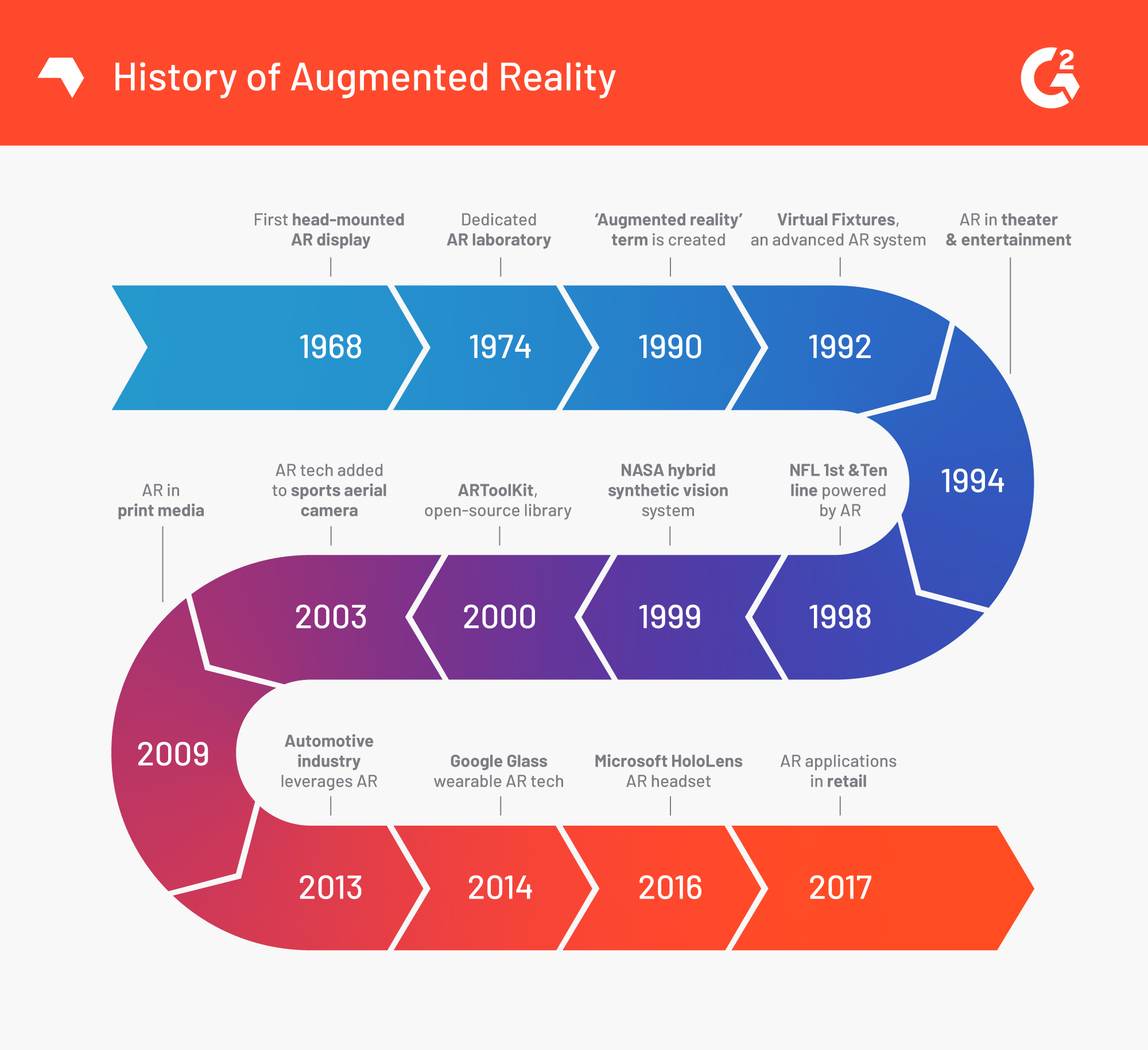
Augmented reality in the 60s & 70s
Let's take a look back to see how AR technology was created in the first place.
1968: Ivan Sutherland, a Harvard professor and computer scientist, created the first head-mounted display called ‘The Sword of Damocles’.
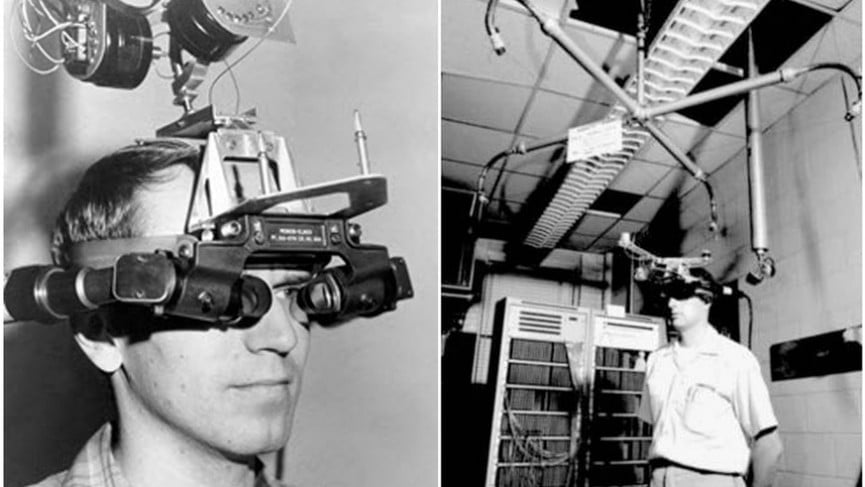
The user experienced computer-generated graphics that enhanced their sensory perception of the world.
RELATED: Up until this point, VR / AR were essentially the same concept. In our guide to virtual reality, see how the two split and advance from here.
1974: Myron Kruger, a computer researcher and artist, built a laboratory at the University of Connecticut called ‘Videoplace’ that was entirely dedicated to artificial reality.
Within these walls, projection and camera technology were used to emit onscreen silhouettes that surrounded users for an interactive experience.
Augmented reality in the 80s & 90s
Now, let's learn how AR transitioned out of the lab and into various industries and business applications.
1990: Tom Caudell, a Boeing researcher, coined the term ‘augmented reality’.
1992: Louis Rosenburg, a researcher in the USAF Armstrong's Research Lab, created ‘Virtual Fixtures’, which was one of the first fully functional augmented reality systems.
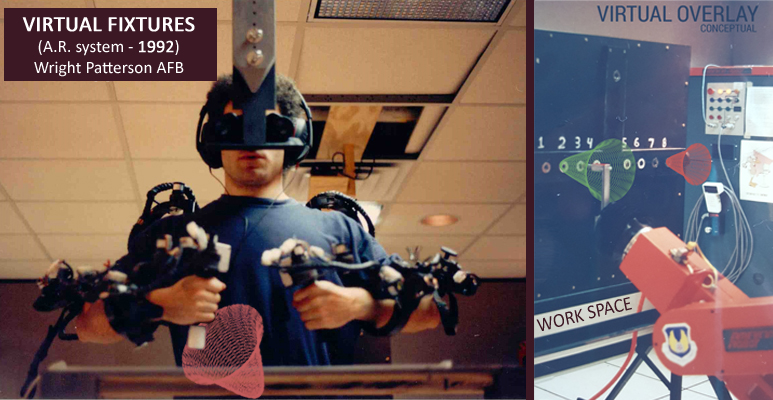
The system allowed military personnel to virtually control and guide machinery to perform tasks like training their US Air Force pilots on safer flying practices.
RELATED: This was the first time that physical objects and digital objects interacted with one another – known today was mixed reality.
1994: Julie Martin, a writer and producer, brought augmented reality to the entertainment industry for the first time with the theater production titled Dancing in Cyberspace.
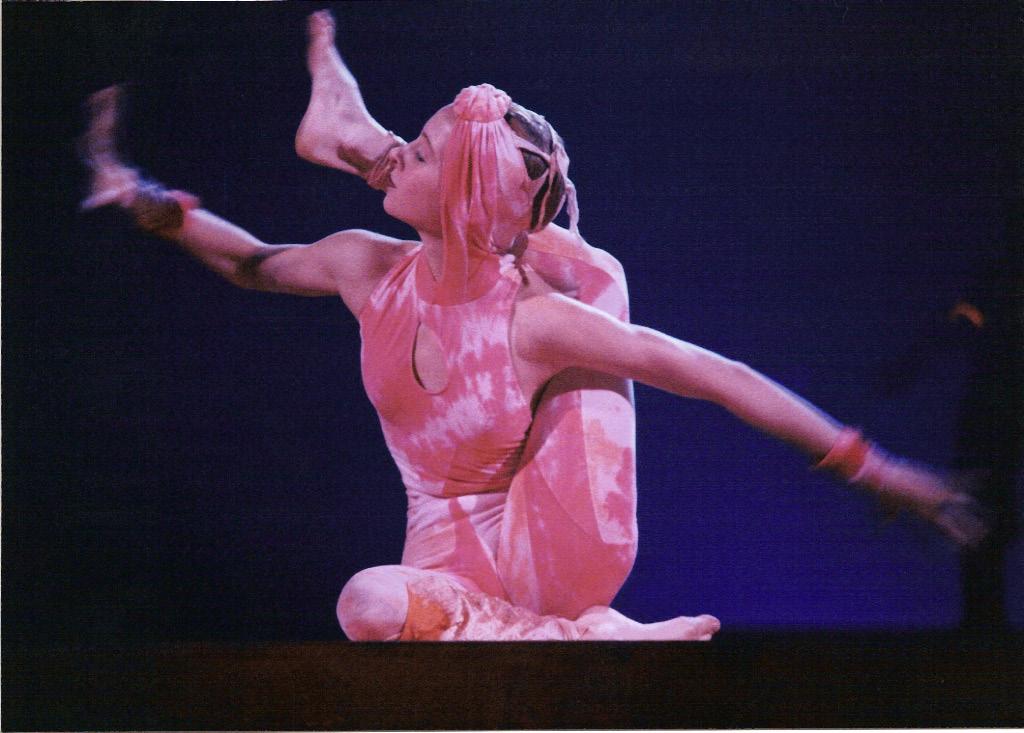
The show featured acrobats dancing alongside projected virtual objects on the physical stage.
1998: Sportsvision broadcasts the first live NFL game with the virtual 1st & Ten graphic system—aka the yellow yard marker. The technology displays a yellow line overlayed on top of the feed so viewers can quickly see where the team just advanced to get a first down.
This system is still used today, although admittedly more advanced than it was in the late ‘90s. Viewers have become accustomed to the yellow line marker and other additional graphics – most don’t even know that this is a form of AR technology.
1999: NASA created a hybrid synthetic vision system of their X-38 spacecraft. The system leveraged AR technology to assist in providing better navigation during their test flights.
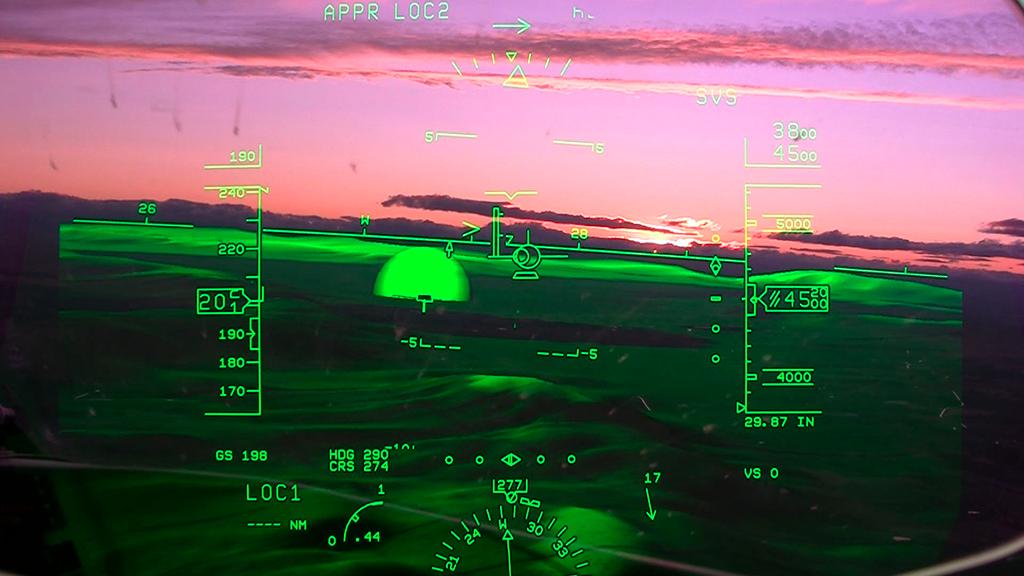
The augmented reality component displayed map data right on the pilot’s screen.
Augmented reality in the 2000s & today
By now, AR has a foothold in the fast-paced tech landscape. Let's see how its eventually rolled out to everyday consumers.
2000: Hirokazu Kato developed an open-source software library called the ARToolKit. This package helps other developers build augmented reality software programs. The library uses video tracking to overlay virtual graphics on top of the real world.
2003: Sportvision enhanced the 1st & Ten graphic to include the feature on the new Skycam system – providing viewers with an aerial shot of the field with graphics overlaid on top of it.
2009: Esquire Magazine used augmented reality in print media for the first time in an attempt to make the pages come alive.
When readers scanned the cover, the augmented reality equipped magazine featured Robert Downey Jr. speaking to readers.
BONUS: In the same year, ARToolKit brought augmented reality to web browsers.
2013: Volkswagen debuted the MARTA app (Mobile Augmented Reality Technical Assistance) which primarily gave technicians step-by-step repair instructions within the service manual.
This adaptation of AR technology was groundbreaking, as it could and would be applied to many different industries to align and streamline processes.
2014: Google unveiled its Google Glass devices, a pair of augmented reality glasses that users could wear for immersive experiences.
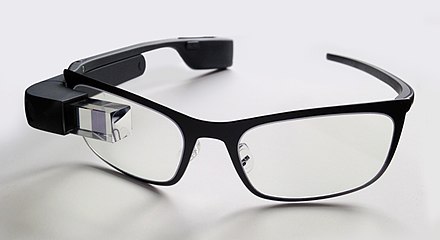
Users wore the AR tech and communicated with the Internet via natural language processing commands. With this device, users could access a variety of applications like Google Maps, Google+, Gmail, and more.
2016: Microsoft starts shipping its version of wearable AR technology called the HoloLens, which is more advanced than the Google Glass, but came with a hefty price tag. It’s definitely not an everyday type of accessory.
The headset runs on Windows 10 and is essentially a wearable computer. It also allows users to scan their surroundings and create their own AR experiences.
BONUS: Pokemon Go brought augmented reality to the masses in 2016 and changed the way average consumers thought about the emerging technology.
2017: IKEA released its augmented reality app called IKEA Place that changed the retail industry forever.
The app allows customers to virtually preview their home decor options before actually making a purchase.
2018: Towards the end of 2017 and the beginning of 2018, augmented reality experienced a massive boost in public recognition, with Apple and Google introducing their respective AR development kits—ARKit for iOS and ARCore for Android.
2021 to 2023: During this time period, AR technologies like Spark AR, AR navigation, smart mirrors, and virtual try-ons gained traction. These technologies enhanced social media experiences and transformed how consumers shop, allowing them to preview products digitally.
The future of augmented reality
AR still seems to be misconstrued as too ‘high tech’ for the average Joe. But the truth is that augmented reality is already used by everyday consumers—they just don’t know it. The biggest shift in augmented reality will have to be how it's delivered to change the perception.
In the near future we can expect innovative applications in retail, healthcare, and education powered by AI for improved functionality and personalization. For instance, AR can significantly enhance healthcare by enabling professionals to overlay medical images directly onto patients, improving diagnostic accuracy. In education, it can offer interactive experiences with 3D models tailored to different learning styles, making lessons more engaging.
While augmented reality hardware currently lags behind, there’s significant potential for the development of practical AR headsets. As wearable technology becomes more mainstream, consumers are likely to embrace AR devices. Future hardware is expected to be sleeker, more powerful, and more affordable.
Ultimately, future AR tech promises to deliver immersive experiences that enhance communication, learning, shopping, and entertainment. With ongoing advancements, the possibilities are limitless.
Related: Check out these augmented reality statistics to learn about what's happening in AR tech and what the future holds.
To infinity and beyond
To get a good idea of where augmented reality technology is headed, we have to look back on its history. AR was built from the ground up and now is the perfect time for it to take off and soar to new heights.
Extended reality is the way forward in both consumer and business settings. Check out how AR is changing the marketing space!
This article was originally published in 2023. It has been updated with new information.

Bridget Poetker
Bridget Poetker is a former content team lead at G2. Born and raised in Chicagoland, she graduated from U of I. In her free time, you'll find Bridget in the bleachers at Wrigley Field or posted up at the nearest rooftop patio. (she/her/hers)
